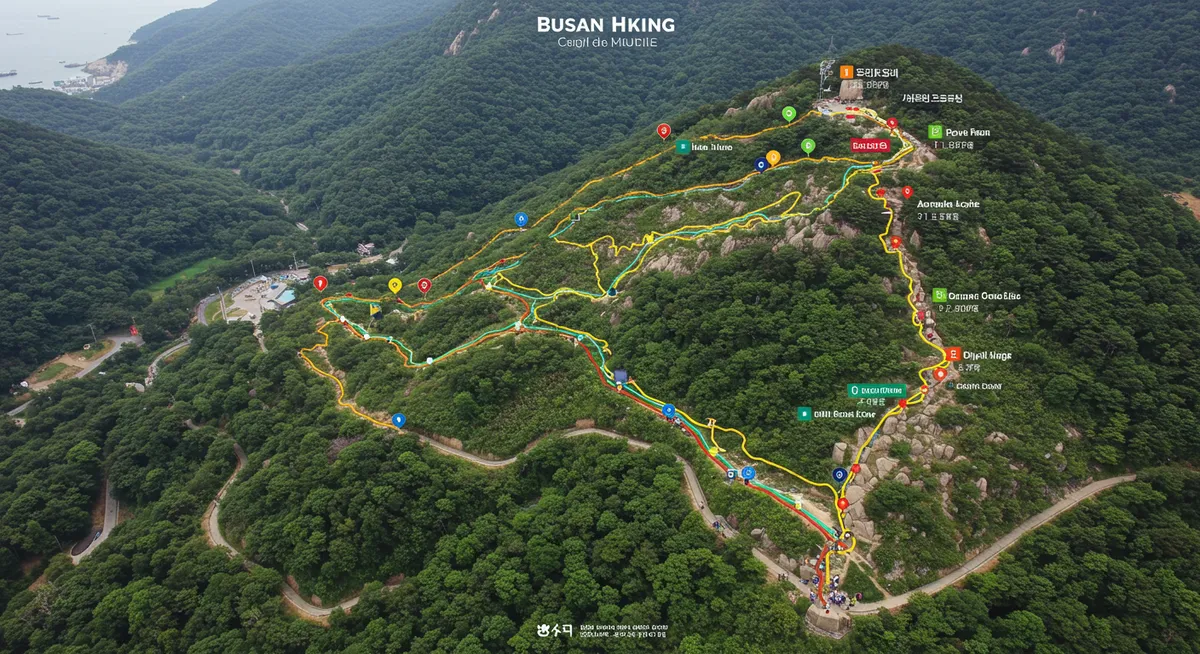
Busan Hiking Trails: Your Difficulty Guide
Table of Contents
Want to find the best nature experiences for this destination? Chat with our nature tourism specialist!
Get Nature TipsCategory: busan-hiking-trails-difficulty-guide
Your Comprehensive Guide to Busan Hiking Trails Difficulty
Having explored countless peaks and coastal paths across South Korea, I can confidently say that Busan offers some of the most rewarding hiking experiences, blending urban vistas with stunning natural beauty. Choosing the right trail is key to a memorable outing, especially when considering the varied terrain this vibrant city presents. This Busan hiking trails difficulty guide aims to demystify the local routes, helping you pick an adventure that matches your skill level and desire for challenge.
Easy Hiking Trails in Busan
For those seeking a gentle stroll or a family-friendly outing, Busan boasts numerous easy hiking trails that offer stunning views without demanding too much exertion. My personal favorite, the Igidae Coastal Walk, exemplifies this, providing picturesque ocean vistas and charming boardwalk sections. It's an ideal spot to experience Busan's natural beauty. Another excellent option is Dongbaekseom Island, which features a paved loop trail perfect for a leisurely walk around APEC House and the iconic mermaid statue. These easy routes are perfect for all ages and offer fantastic photo opportunities, making them a top choice for anyone looking to enjoy the outdoors at a relaxed pace. They are easily accessible and provide a wonderful introduction to Busan's nature attractions.
Moderate Hiking Trails for a Challenge
If you're looking for a bit more of a workout without venturing into expert territory, Busan's moderate hiking trails strike a perfect balance. A great example is Hwangnyeongsan Mountain, which offers multiple routes, some with gradual inclines and others with slightly steeper sections, leading to panoramic city views. I often recommend the ascent from Jeonpo Station for a rewarding experience. These paths typically involve longer distances and more significant elevation changes than the easy trails, requiring a moderate level of fitness. They are well-maintained and popular among locals, providing a more immersive outdoor adventure. Consider exploring some of the less strenuous routes within Geumjeongsan for a satisfying hike among Busan's best parks for nature lovers.
Challenging Peaks for Experienced Hikers
For the seasoned adventurer seeking an exhilarating climb, Busan presents several challenging hiking trails that promise breathtaking rewards. The ultimate test in Busan is undoubtedly ascending Godangbong Peak on Geumjeongsan Mountain, the city's highest point. This demanding trek involves steep, rocky ascents and requires excellent physical conditioning and proper hiking gear. The journey to the summit can take several hours, but the expansive views of Busan and beyond are absolutely worth the effort. Another formidable option is Jangsan Mountain, particularly its main summit routes, which offer rigorous climbs and stunning vistas of Haeundae Beach. These trails are ideal for those who thrive on intense physical challenges and seek the most rugged hidden natural gems Busan has to offer.
Tips for Safe and Enjoyable Busan Hikes
Regardless of the Busan hiking trails difficulty guide level you choose, preparation is key for a safe and enjoyable experience. Always wear appropriate footwear with good ankle support, carry enough water, and check the weather forecast before heading out. Trust me, a sudden downpour can make even an easy trail slippery! It's also wise to bring a map or use a reliable hiking app, especially for longer, more complex routes. Many trails are accessible via public transport, making it convenient to start your adventure. Remember to respect nature by sticking to marked paths and leaving no trace behind. Embracing these practices will ensure a responsible and rewarding ecofriendly activity in Busan.
Frequently Asked Questions
What is the best time of year to hike in Busan?
Are there any specific safety precautions for hiking in Busan?
Can beginners hike Geumjeongsan Mountain?
Busan truly is a hiker's paradise, offering an incredible range of trails to suit every fitness level and preference. From serene coastal strolls to invigorating mountain ascents, this Busan hiking trails difficulty guide should equip you with the knowledge to choose your next adventure wisely. Remember to prepare adequately, respect the natural environment, and most importantly, enjoy the stunning landscapes that await. So, pack your bags and set out to discover the breathtaking natural beauty of Busan.